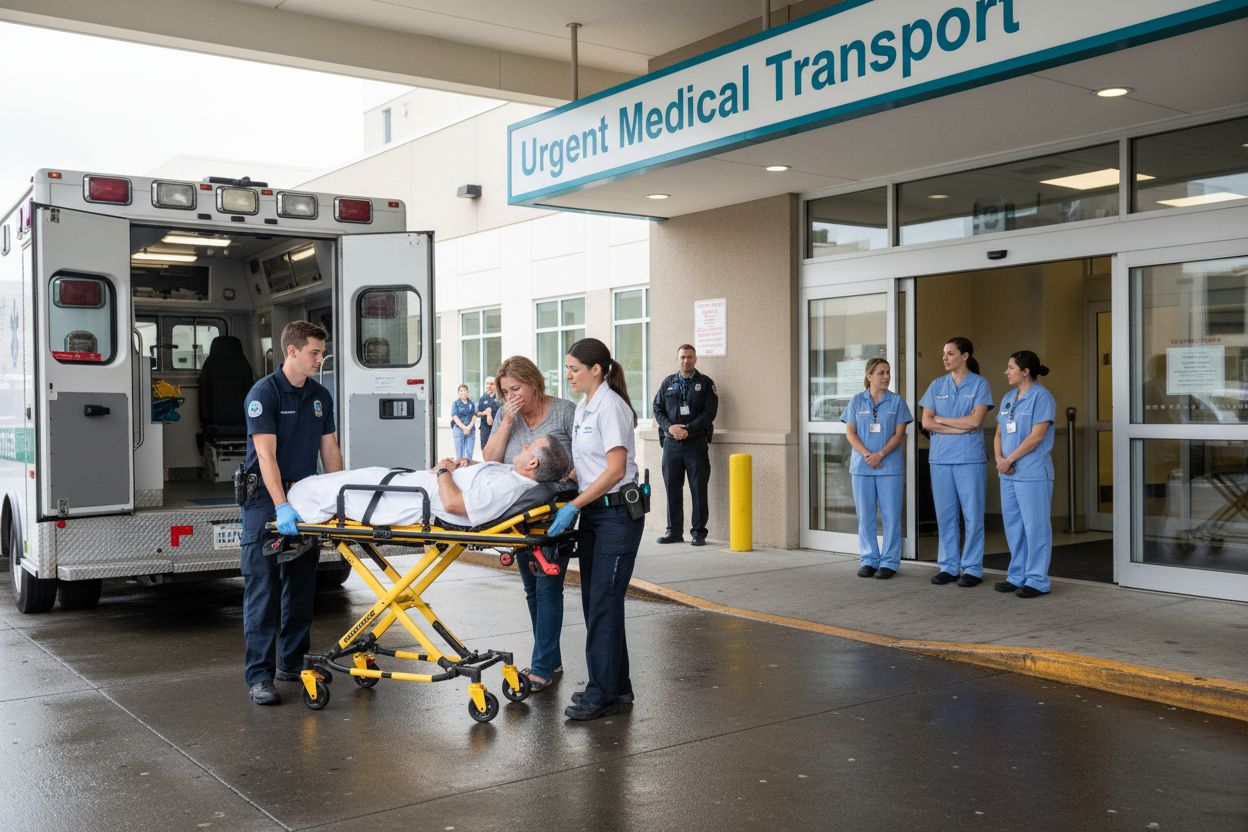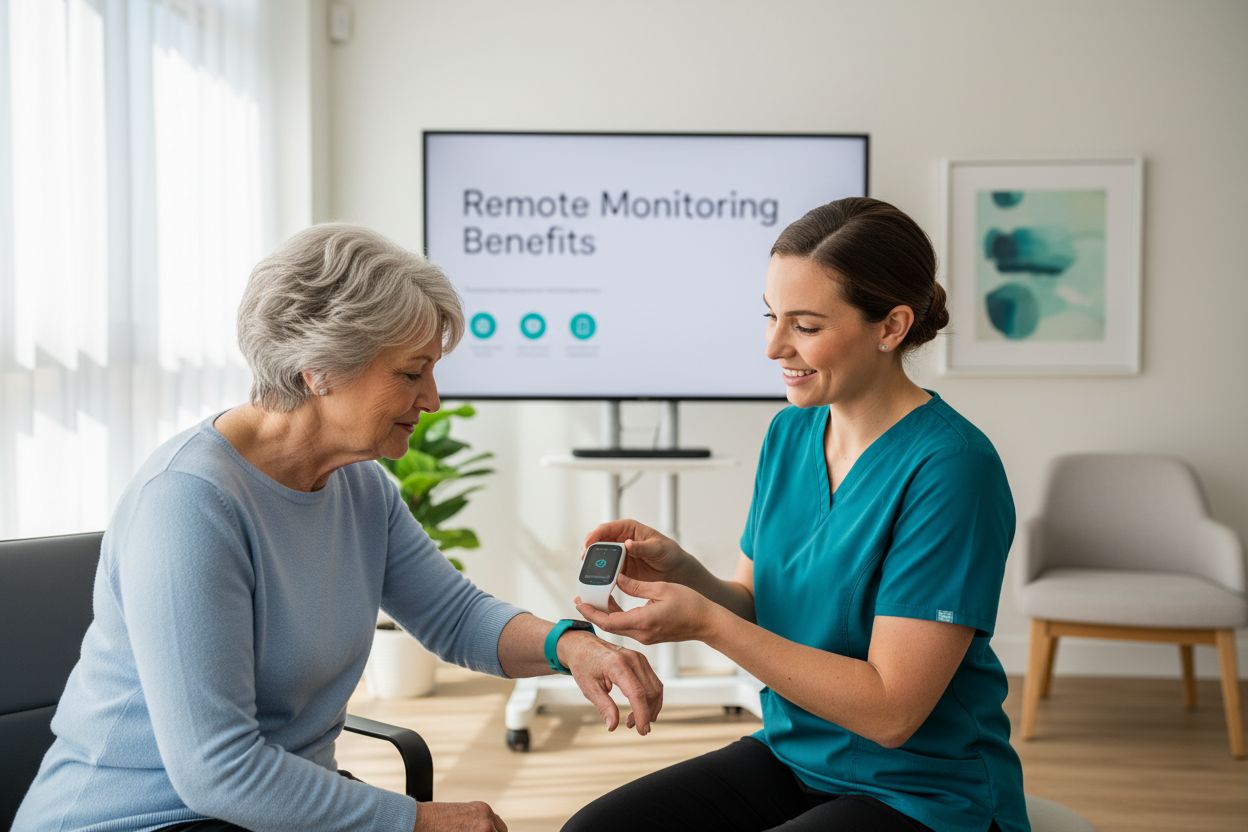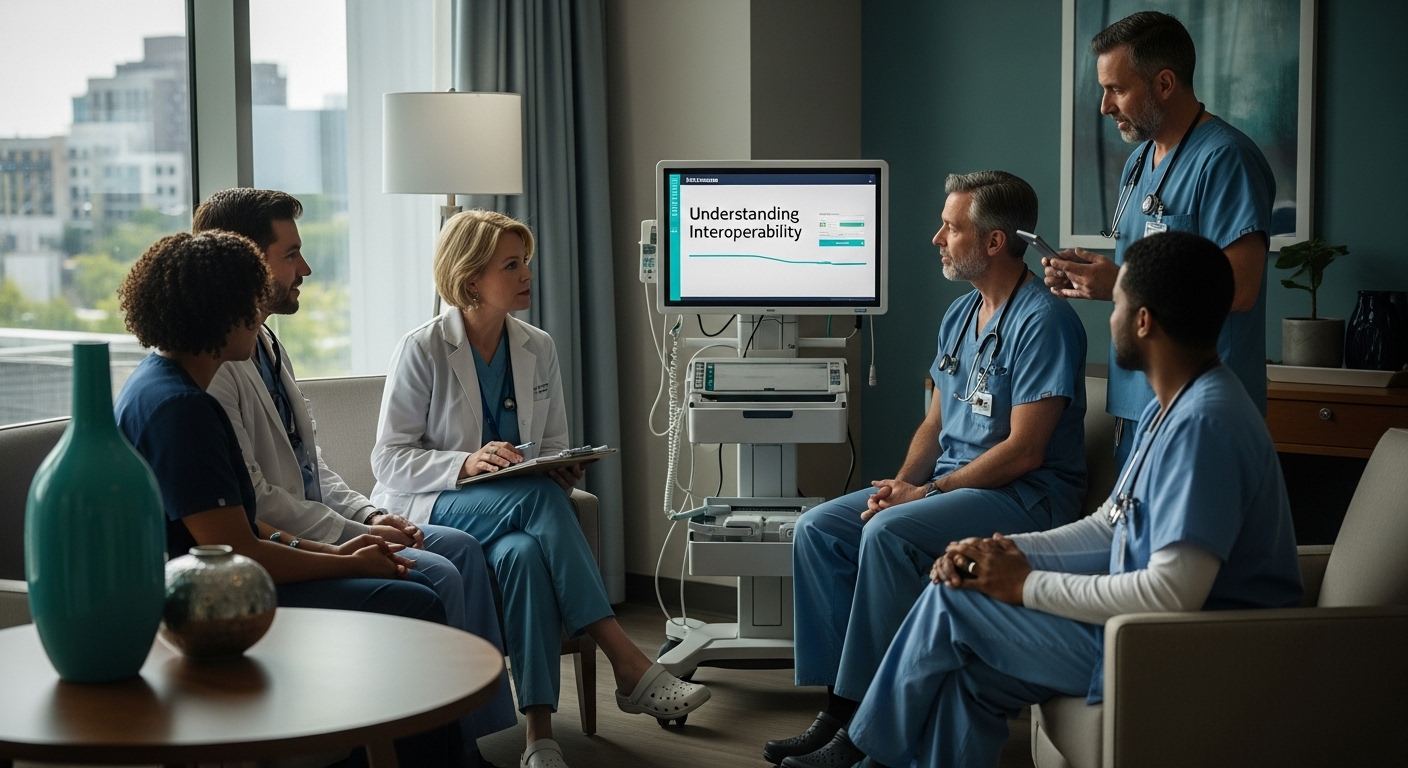Understanding Secure Medical Communication in Healthcare
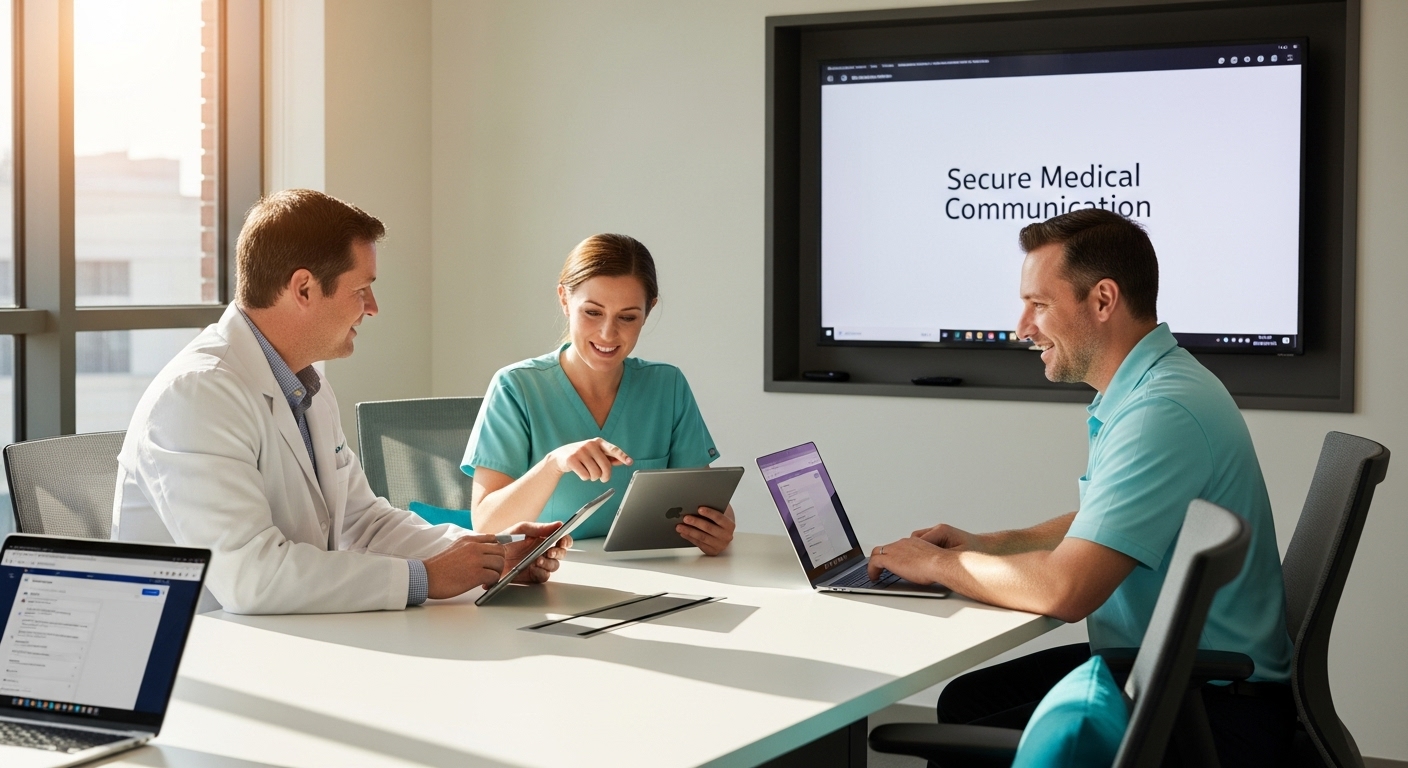
Secure medical communication sounds like a technical add-on for hospitals, just another item on a checklist. Yet healthcare data breaches exposed over 59 million patient records in a single year, and that number keeps climbing. The real twist is that secure communication does more than prevent leaks, it actually strengthens patient safety, improves clinical accuracy, and builds trust that technology alone can never guarantee.
Table of Contents
- What Is Secure Medical Communication?
- Why Secure Medical Communication Matters
- How Secure Medical Communication Works
- Key Concepts In Secure Medical Communication
Quick Summary
| Takeaway | Explanation |
|---|---|
| Implement robust encryption technologies | Use advanced encryption to protect patient data during transmission and storage. |
| Establish strict access control mechanisms | Limit information access to authorized personnel through multi-factor authentication and role-based controls. |
| Maintain compliance with regulatory standards | Ensure HIPAA compliance and utilize certified communication platforms to protect patient privacy. |
| Create audit trails for accountability | Track all data interactions to identify potential breaches and enhance security measures. |
| Prioritize patient privacy and safety | Secure medical communication enhances patient trust and reduces medical errors, improving health outcomes. |
What is Secure Medical Communication?
Secure medical communication represents a critical technological approach to protecting sensitive healthcare information while enabling efficient data exchange between medical professionals, patients, and healthcare systems. Medical privacy regulations demand robust communication protocols that safeguard patient data from unauthorized access and potential breaches.
Core Principles of Secure Medical Communication
At its fundamental level, secure medical communication involves multiple layers of protection designed to maintain confidentiality, integrity, and accessibility of healthcare information. These layers typically include:
- Encryption technologies that transform patient data into unreadable formats
- Access control mechanisms restricting information to authorized personnel
- Secure transmission protocols ensuring data remains protected during transfer
Healthcare organizations implement these principles through advanced digital platforms that integrate sophisticated security measures. These systems go beyond traditional communication methods by incorporating advanced authentication processes and real-time monitoring of data interactions.
Technological Infrastructure Supporting Secure Communication
Modern secure medical communication relies on comprehensive technological infrastructures that blend cybersecurity principles with healthcare-specific requirements. This involves utilizing HIPAA-compliant platforms that provide end-to-end encryption, multi-factor authentication, and detailed audit trails.
These systems enable healthcare providers to exchange critical patient information securely, whether communicating about treatment plans, sharing diagnostic results, or coordinating complex care scenarios. By implementing robust security protocols, medical professionals can maintain patient privacy while ensuring seamless and efficient information exchange.
The goal of secure medical communication is not just protection but creating a framework that allows swift, accurate, and confidential sharing of medical information across different healthcare environments.
Why Secure Medical Communication Matters
Secure medical communication is more than a technological requirement it represents a critical lifeline in modern healthcare delivery. Healthcare IT security resources demonstrate that effective communication protocols directly impact patient safety, clinical outcomes, and healthcare system integrity.
Patient Privacy and Legal Compliance
Healthcare organizations face significant legal and ethical obligations to protect patient information. Breaches can result in severe consequences including:
- Substantial financial penalties under HIPAA regulations
- Potential loss of professional licensing
- Irreparable damage to institutional reputation
- Compromised patient trust
Moreover, secure communication ensures that sensitive medical data remains confidential, preventing potential misuse or unauthorized disclosure that could harm patient relationships and overall healthcare delivery.
Risk Mitigation and Clinical Accuracy
Secure communication systems play a pivotal role in reducing medical errors and improving clinical decision making. By establishing controlled information exchange channels, healthcare providers can:
- Eliminate communication ambiguities
- Ensure accurate patient record transmission
- Minimize risks associated with miscommunication
- Create comprehensive audit trails for accountability
These systems are particularly crucial in complex medical scenarios involving multiple healthcare providers, specialist consultations, and interdepartmental communications where precision is paramount. Learn more about credentialing processes that support secure communication.
Ultimately, secure medical communication represents a fundamental pillar of modern healthcare infrastructure. It transforms communication from a potential vulnerability into a strategic asset that protects patients, supports clinical excellence, and maintains the highest standards of professional integrity.
How Secure Medical Communication Works
Secure medical communication operates through sophisticated technological frameworks designed to protect sensitive healthcare information from unauthorized access and potential breaches. Advanced healthcare communication technologies demonstrate a multilayered approach to ensuring data privacy and integrity.
Technological Foundations of Secure Communication
The core mechanism of secure medical communication relies on advanced encryption technologies that transform patient data into unreadable formats during transmission. This process involves multiple critical components:
- End-to-end encryption that scrambles information between sender and recipient
- Secure protocol layers that create protected communication channels
- Authentication mechanisms verifying the identity of authorized users
These technological foundations ensure that medical information remains confidential and accessible only to intended recipients, creating a robust barrier against potential cyber threats and unauthorized data access.
Access Control and Authentication Protocols
Healthcare organizations implement comprehensive access control systems that go beyond traditional security measures. These protocols include:
- Multi-factor authentication requiring multiple verification steps
- Role-based access controls limiting information visibility
- Detailed audit trails tracking all data interactions
By implementing strategic communication workflows, medical institutions can create granular control systems that protect patient information while enabling efficient data exchange.
The intricate process of secure medical communication transforms complex technological mechanisms into a seamless, invisible layer of protection. It represents a critical intersection of cybersecurity principles and healthcare communication needs, ensuring that sensitive patient information remains both accessible to authorized personnel and completely shielded from potential security risks.
Key Concepts in Secure Medical Communication
Secure medical communication encompasses a complex array of interconnected principles that ensure patient data protection and seamless healthcare information exchange. Health information exchange standards demonstrate the sophisticated frameworks underlying modern medical communication strategies.
Fundamental Principles of Data Protection
At the core of secure medical communication lie three critical principles that guide all technological and procedural approaches:
- Confidentiality: Ensuring that patient information remains private and accessible only to authorized personnel
- Integrity: Maintaining the accuracy and consistency of medical data throughout transmission
- Availability: Guaranteeing that authorized users can access necessary information when required
These principles form the foundational framework that healthcare organizations must navigate to create robust communication systems that protect patient rights while enabling effective medical care delivery.
To clarify each foundational concept, the following table defines the core principles that guide secure medical communication in healthcare.
| Principle | Definition |
|---|---|
| Confidentiality | Ensuring that patient information remains private and accessible only to authorized personnel |
| Integrity | Maintaining the accuracy and consistency of medical data throughout transmission |
| Availability | Guaranteeing that authorized users can access necessary information when required |
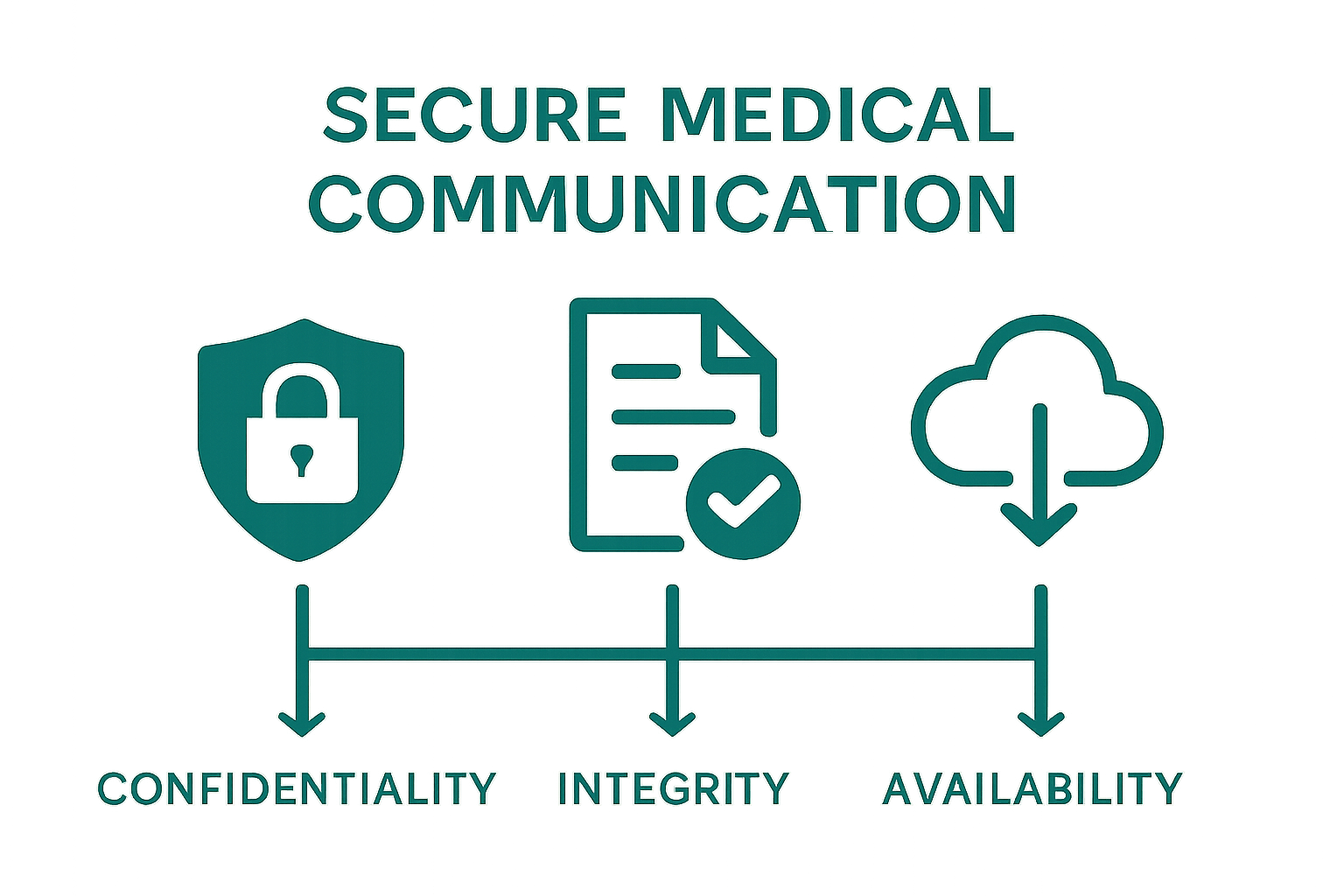
Technological and Regulatory Components
Secure medical communication integrates multiple technological and regulatory elements that work in concert to protect sensitive healthcare information. Key components include:
- Advanced encryption protocols
- Comprehensive access control mechanisms
- Compliance with HIPAA and other regulatory standards
- Interoperable communication platforms
Healthcare providers must carefully balance technological capabilities with regulatory requirements.
This table outlines the main technological and regulatory components that contribute to secure medical communication, highlighting their roles in safeguarding healthcare data.
| Component | Purpose |
|---|---|
| Advanced encryption protocols | Protect data during transmission and storage |
| Access control mechanisms | Restrict information to authorized personnel |
| Regulatory compliance (HIPAA) | Ensure adherence to legal standards for patient privacy |
| Interoperable platforms | Enable secure, seamless communication across healthcare environments |
Ultimately, secure medical communication represents a dynamic ecosystem where technological innovation, regulatory compliance, and patient privacy converge. It demands continuous adaptation to emerging technological challenges and evolving healthcare communication needs, ensuring that patient data remains protected while facilitating efficient and effective medical care delivery.

Transform Secure Medical Communication Into Seamless Care Coordination
You have seen how critical secure medical communication is for protecting patient privacy and ensuring accurate care collaboration. But the challenge remains: many healthcare systems still struggle with fragmented workflows, costly delays, and high-risk data exchange. If these gaps sound familiar, you are not alone. The article highlights the urgency for real-time, HIPAA-compliant systems that uphold confidentiality, transparency, and trust.
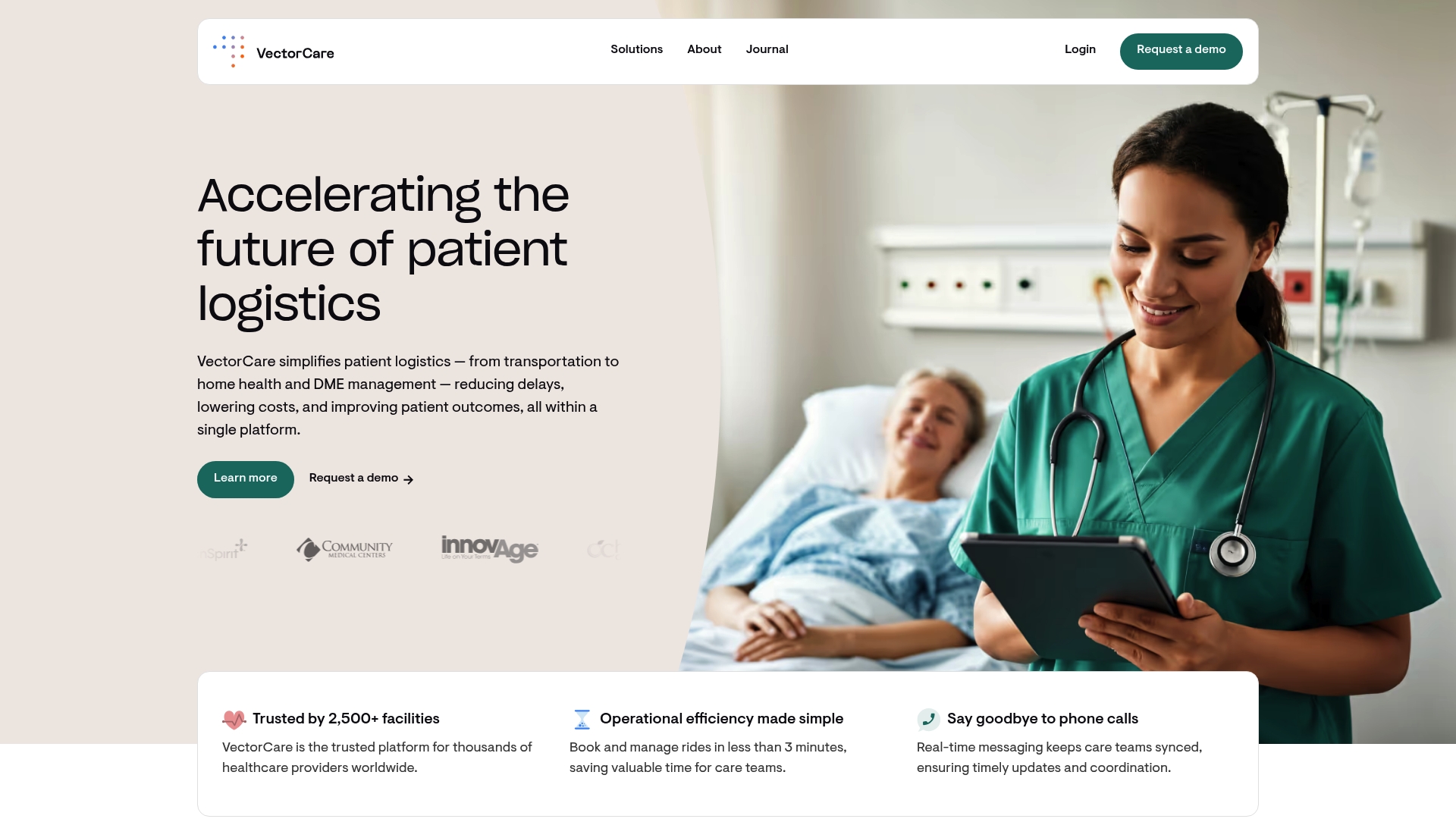
Ready to eliminate miscommunication and build a more resilient healthcare operation? Discover how VectorCare’s digital platform elevates secure communication with automated workflows, advanced scheduling, and robust data protection built in from the ground up. Boost operational efficiency, protect patient data, and streamline every layer of your logistics—starting today. Visit VectorCare to see why top healthcare leaders choose our secure, compliant, and user-friendly solution. Your next-level patient experience starts now.
Frequently Asked Questions
What is secure medical communication?
Secure medical communication refers to the use of technology to protect sensitive healthcare information while enabling efficient data exchange among medical professionals, patients, and healthcare systems.
Why is secure medical communication important in healthcare?
Secure medical communication is vital for protecting patient privacy, ensuring legal compliance, and reducing risks associated with data breaches and medical errors, thereby enhancing overall patient safety and trust in healthcare systems.
How does secure medical communication work?
Secure medical communication works through advanced encryption technologies, secure transmission protocols, and comprehensive access control mechanisms that protect sensitive healthcare information during its exchange.
What are the core principles of secure medical communication?
The core principles include confidentiality (protecting patient data privacy), integrity (maintaining accurate and consistent information), and availability (ensuring authorized users can access necessary information when needed).
Recommended
- Common Credentialing Hurdles: Turn Risk Into Reliability – VectorCare
- Healthcare Credentialing 101 – VectorCare
- The Patient’s Journey Podcast: Melanie Combs-Dyer – VectorCare
- The Patient’s Journey Podcast: Ryan Riberia – VectorCare
- Introduzione alla comunicazione strategica nelle professioni sanitarie • Gio Talente
